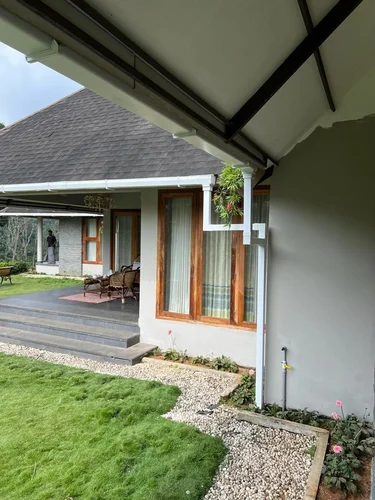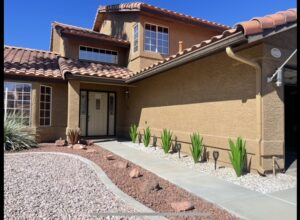Rain gutters might not be the first thing that comes to mind when thinking about landscaping, but they play a crucial role in preserving the beauty and integrity of your outdoor space. A well-designed gutter system does more than direct rainwater off your roof—it can be an essential element in protecting your garden from water damage. Without proper water management, even the most thoughtfully planned landscaping can suffer erosion, root rot, and other water-related issues. Understanding how rain gutters interact with your landscape can help you avoid these problems and ensure your garden remains healthy and vibrant.
The Relationship Between Gutters and Your Garden
 Rain gutters are installed along the edges of your roof to collect and channel rainwater through downspouts, directing it away from your home’s foundation. While this system primarily protects the structural integrity of your house, it also has a significant impact on your garden. If rainwater is not properly diverted, it can accumulate around your home, saturating the soil and leading to pooling or flooding in your garden beds.
Rain gutters are installed along the edges of your roof to collect and channel rainwater through downspouts, directing it away from your home’s foundation. While this system primarily protects the structural integrity of your house, it also has a significant impact on your garden. If rainwater is not properly diverted, it can accumulate around your home, saturating the soil and leading to pooling or flooding in your garden beds.
Water accumulation can quickly damage plants, especially those sensitive to overwatering. Excess water can wash away topsoil, which is rich in nutrients essential for plant growth. This erosion not only weakens the foundation of your landscape design but can also expose plant roots, making them more susceptible to disease and decay.
Common Landscaping Problems Caused by Poor Gutter Management
Improperly managed rainwater can lead to several issues that compromise your landscaping efforts. Soil erosion is among the most common problems, particularly in sloped gardens where water flows downhill and strips the soil of its organic matter. In flat landscapes, water may pool and create soggy conditions that hinder plant health and growth.
Over time, standing water can lead to the development of mold and mildew, both of which can affect plant life and the structural features of your landscape, such as wooden decks or fences. Waterlogged areas can also attract pests like mosquitoes, which breed in stagnant water and can make outdoor living spaces uncomfortable.
If your garden includes pathways or stone borders, uncontrolled water flow can dislodge stones or pavers, creating uneven surfaces and tripping hazards. Flowerbeds and vegetable patches may also suffer, as excess water can lead to root rot, yellowing leaves, and stunted plant development.
Smart Gutter Solutions for Garden Protection
 The key to protecting your landscaping from water damage is to ensure your rain gutters are well-maintained and properly configured. Start by regularly cleaning your gutters and downspouts to remove leaves, twigs, and other debris that can cause clogs. Blockages prevent water from flowing freely, resulting in overflow that can cascade directly onto your garden.
The key to protecting your landscaping from water damage is to ensure your rain gutters are well-maintained and properly configured. Start by regularly cleaning your gutters and downspouts to remove leaves, twigs, and other debris that can cause clogs. Blockages prevent water from flowing freely, resulting in overflow that can cascade directly onto your garden.
Another effective solution is installing gutter extensions or splash blocks to guide water further away from your home’s foundation and planting areas. These tools help disperse water more gradually into your yard, reducing the risk of concentrated erosion.
For more advanced protection, consider incorporating a rain barrel system. These containers collect and store rainwater from your gutters, which you can later use to irrigate your garden during dry spells. This not only helps conserve water but also prevents your garden from being overwhelmed during heavy rains.
Integrating Drainage with Landscape Design
A thoughtful landscape design can also play a vital role in managing rainwater. Grading your yard so it slopes away from the house ensures that water naturally flows toward drainage areas rather than pooling around plant beds. Swales, or shallow ditches lined with grass or gravel, can be integrated into your landscaping to channel excess water safely through your garden.
Permeable surfaces like gravel paths or paver stones with grass gaps can further assist with water absorption, reducing runoff and helping water penetrate the soil where it’s needed most. Planting native vegetation with deep root systems also helps stabilize the soil and absorb excess moisture.
French drains and dry creek beds are additional landscape features that combine form and function, guiding water through your yard while adding visual interest. These can be especially useful in areas with frequent rainfall or properties with poor natural drainage.
